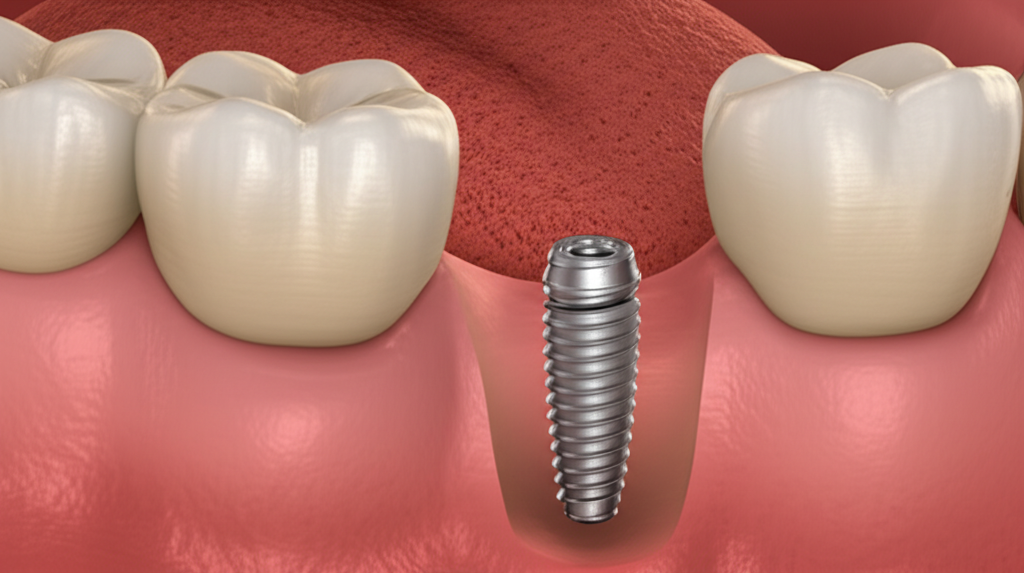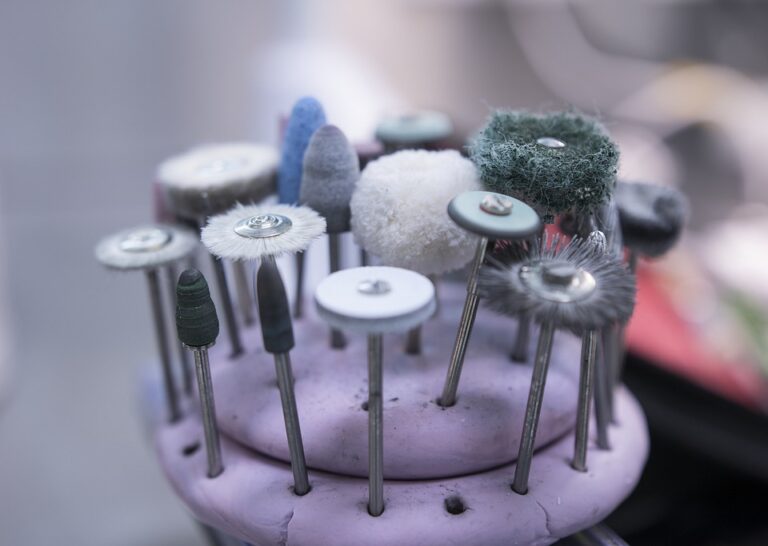
What is a Partial Dental Implant? My Complete Guide to Single Tooth Replacement
Table of Contents
- Overview
- Understanding Partial Dental Implants: My Introduction and Perspective
- Breaking Down the Partial Dental Implant: Components and Function
- The Implant Fixture (“Root”)
- The Abutment (“Connector”)
- The Dental Crown (“Tooth”)
- How Everything Comes Together
- Why I Chose a Partial Dental Implant: Benefits That Changed My Smile
- Comparing Options: Partial Dental Implants vs. Bridges and Dentures
- Partial Dental Implant vs Dental Bridge
- Partial Dental Implant vs Removable Partial Denture
- Knowing When an Implant Is the Best Choice
- What the Partial Dental Implant Procedure Is Actually Like
- Initial Consultation and Planning
- Implant Placement Surgery
- Healing and Osseointegration
- Abutment and Crown Placement
- Recovery, Aftercare, and Long-Term Maintenance: My Personal Tips
- Am I a Candidate for a Partial Dental Implant?
- Risks and Complications: What I Learned and What to Watch Out For
- Understanding the Cost of a Partial Dental Implant
- Longevity and Success: How Long Do Partial Dental Implants Last?
- FAQs: The Questions I Had (And Now Can Answer)
- Conclusion: Is a Partial Dental Implant Right for You? My Final Thoughts
Overview
Before I dive into it, I just want to give you a quick map of what you’re about to read. I’ll show you what a partial dental implant really is, how the different parts work, what really happens when you get one, and why it could be your best bet if you’re missing just one tooth. If you’re stuck between bridges, dentures, or implants, I’ll break down how they’re different too. I’ll also share how the procedure went for me, what recovery was like, and the honest pros, cons, costs, and questions you should be aware of. After many years of dental visits, I can walk you through everything, step by step—based on my real experience and some good research.
Understanding Partial Dental Implants: My Introduction and Perspective
Losing just one tooth can really throw your whole mouth out of whack. I learned this when I lost a back tooth a few years ago. Suddenly eating felt weird, my bite changed, even my jaw started to look a little different. That’s when I started checking into my options and found out about partial dental implants.
Basic idea: A partial dental implant fills in the gap of a single missing tooth with something that acts and looks like your own. It has three parts: a screw-like part that goes in your jaw (like a root), a connector (abutment), and a crown on top. It’s basically a custom “tooth” from the inside out.
Maybe you’re thinking, “Why bother with all this for one tooth?” Well, that gap isn’t harmless. If you leave it, over time your jawbone can get smaller, other teeth can move, and your bite and even your smile can look different. You might also feel less sure about your smile. If you’re in the same spot I was, I hope what I learned will help you pick what’s right for you.
Breaking Down the Partial Dental Implant: Components and Function
Let me make this simple. When I sat in the dentist’s chair and saw a model of the parts, it clicked for me.
The Implant Fixture (“Root”)
First is the implant fixture. It’s a tiny screw (mine was titanium, but sometimes it’s zirconia). My dentist said titanium is really tough, light, and your body almost always “likes” it. When it’s put in your jawbone, bone cells grow around it and lock it in place—this is called osseointegration. It’s kind of like how a tree’s roots anchor into the ground.
The Abutment (“Connector”)
Next is the abutment—the connector that sticks out above the gum. There are stock abutments, which are pre-made, and custom abutments, made just for your mouth. I got a custom one for a better fit and angle.
The Dental Crown (“Tooth”)
Finally, the crown is the part that looks like a tooth. Mine was made to match my other teeth at a dental lab, using modern tools for a great fit and look. Crowns today are usually porcelain, ceramic, or zirconia. The goal is for no one—even you—to spot the fake.
How Everything Comes Together
Think of a real tooth: root in the bone, then gumline, then the tooth you see. Implants copy this. The fixture is the “root,” abutment is the “neck,” and the crown is your new tooth. All together, they make your smile look normal again.
Why I Chose a Partial Dental Implant: Benefits That Changed My Smile
Dental surgery used to scare me. But after I got a bridge years back (which meant my dentist shaved down two healthy teeth) and tried a partial denture that always felt strange, I wanted something better.
What sold me on partial dental implants, and what I saw for myself:
- Protects other teeth: Bridges need good teeth next to the gap to be ground down. Implants leave them alone.
- Keeps your jaw strong: With nothing in the bone, the jawbone will slowly weaken. Implants help keep it healthy.
- Lasts long: Most single implants last a really long time—20 years or even for life if you care for them.
- Looks and feels real: Once I got my crown, I couldn’t tell it from my real teeth.
- Easy to clean: You brush it like a normal tooth. No extra tools, no food stuck like with my old denture.
- Bite and talk better: My chewing was back to normal, and it felt strong again.
These benefits made a real difference for me. If you want something you can forget is even there and looks real, implants are great.
Comparing Options: Partial Dental Implants vs. Bridges and Dentures
When I started digging into this, I was shocked by how many ways there are to fix a gap. Here’s what stood out comparing implants to the other choices.
Partial Dental Implant vs Dental Bridge
Bridges fill the gap using a “bridge” tooth hung on the teeth next door. It works, but costs you in a way.
- Saving teeth: With bridges, you need to grind down the good teeth next to your missing one—and this can never be undone. If one of those teeth gets a cavity, you could need more dental work.
- Jawbone: Bridges sit on top of the gums, so the bone under the missing tooth will shrink.
- How long it lasts: Bridges usually last 7-10 years. Implants tend to last a lot longer.
- Money: At first, a bridge might cost less. Over time, though, repeat fixes or new bridges may actually cost more than an implant.
Partial Dental Implant vs Removable Partial Denture
I wore a removable partial denture for a year, so I know what it’s like:
- Stays in place: Dentures often move when eating or talking. Implants don’t move at all.
- Comfort: Dentures can rub and make your gums sore. My implant never did.
- Easy cleaning: Dentures have to be soaked and cleaned separately. You brush and floss an implant.
- Bone health: Dentures don’t stop your jawbone from shrinking.
- Looks: Modern dentures look okay, but my implant looked so real no one could spot it.
Knowing When an Implant Is the Best Choice
For me, it was simple; my jawbone was good, I took care of my mouth, and I wanted a fix that I could forget about. But not everyone can get an implant right away. More on that soon.
If you want to know more about how crowns and bridges are made, check out advanced resources like crown and bridge lab for a behind-the-scenes look.
What the Partial Dental Implant Procedure Is Actually Like
Getting dental surgery might sound scary. Here’s what really happened for me, one step at a time.
Initial Consultation and Planning
It all started with a full check-up. I got X-rays and a 3D scan (so they could check my bone and see everything inside my mouth). New tech and planning, even in my small town, made a difference.
My dentist checked how much bone I had. If you lost your tooth a long time back or have gum disease, you may need a bone graft or a sinus lift before the implant.
Implant Placement Surgery
The surgery wasn’t as bad as I thought. I got numbing shots and light sedation. Dentist cut the gum, drilled a small hole, then screwed in the implant. Some can get this done right after removing a tooth, but I waited a few months.
Was it painful? Just a dull pain for a couple of days, handled with plain painkillers. Not much swelling. By day three, I didn’t notice it much.
Healing and Osseointegration
This step is all about waiting. For three months, the implant and jawbone fused together. Meanwhile, I wore a little cover—sometimes called a “healing cap”—to keep my smile looking okay.
Abutment and Crown Placement
After my mouth healed, I had a short visit to add the abutment. They scanned my teeth for the dental lab to make a custom crown. Waiting for the new crown felt slow, but when it came, my smile looked whole again.
Recovery, Aftercare, and Long-Term Maintenance: My Personal Tips
Worried about recovery? Don’t be. Most of it is just common sense.
Right after surgery:
- I stuck with soft foods for a few days—soup, mashed potatoes, eggs.
- Keeping the spot clean was important—gentle rinse with saltwater, being careful not to brush too hard by the implant area at first.
Long-term care:
- I treat my implant just like my real teeth: two brushes a day, flossing (sometimes special floss for implants), and dentist visits twice a year.
- Using a water flosser helped clean around the implant.
Really, keeping my implant clean is easier than with a bridge or denture. The key to keeping a dental implant? Don’t skip dentist visits, and don’t smoke.
Am I a Candidate for a Partial Dental Implant?
Not everyone’s mouth is ready for an implant. Here’s what I learned makes someone a good fit:
- Good mouth and general health—you need healthy gums and no bad sickness.
- Enough bone in your jaw to hold the implant. Sometimes a bone graft is needed.
- Habits matter—if you smoke a lot or grind your teeth, implants may not last as long.
- Certain illnesses (like some bad diabetes or immune problems) can make things harder.
My dentist checked my whole mouth and took scans. We found I was a good candidate. If you’re not sure, go get checked. Let your dentist look at your bones, gums, and health.
Risks and Complications: What I Learned and What to Watch Out For
No dental work is totally risk-free, but implants are actually very safe and predictable. Here’s what I experienced and what dentists say to watch out for:
- Short-term soreness: Most people (me too) get swelling, maybe a bruise, and slight pain for a few days.
- Infection: Rare, but possible. I kept super clean and followed the aftercare instructions, and had no problems.
- Implant won’t hold: Happens in 2–5% of healthy cases—usually if the bone doesn’t knit right or there’s a health problem.
- Peri-implantitis: This is swelling or bone loss around the implant. Keeping your mouth clean stops this.
- Nerve problems: Very rare, especially with today’s scanning and careful surgery.
How did I keep my odds good? I chose a skilled dentist, kept my mouth extra clean, followed all advice, and didn’t skip a single check-up.
Understanding the Cost of a Partial Dental Implant
Let’s talk about money. Implants aren’t cheap, but they last a long time. Here’s what I paid and what to expect:
- Implant, abutment, and crown: Where I live, total cost for one implant was $3,000 to $6,000. The final cost depends on where you live, your dentist, and what’s used for the crown.
- Extra steps: If you need a bone graft, that could add $500 to $3,000 more. 3D scans may cost extra, but they really help.
- Insurance: Most plans pay for some stuff (like pulling the tooth), but not always the implant itself. I paid mine off with a payment plan.
If you want a quality implant that will last, checking out trusted places like implant dental laboratory helps make sure your crown and parts are made right.
Longevity and Success: How Long Do Partial Dental Implants Last?
I picked an implant mostly because I wanted a fix that would last. Here’s what I found out:
- Works most of the time: 95–98% success rates for single implants, according to top dental groups.
- Lasts long: The “root” part can last your whole life. The crown might need a swap after 10-15 years if it wears out.
- Care: Treat it like a real tooth, see the dentist, and don’t smoke or do risky stuff.
If you stick with it, your implant can outlast any bridge or denture, saving you more dental work later.
FAQs: The Questions I Had (And Now Can Answer)
Is the procedure painful?
Not for me! The numbing shots did the trick, and after-surgery pain was mild and didn’t last.
How long is recovery?
Most people are fine to go back to work in a day or two. Full healing (bone fusing) takes a few months, but you don’t really notice.
Can the body “reject” an implant?
True rejection almost never happens with today’s materials. Most failures come from poor healing or infection.
How long will my partial dental implant last?
Take care of it, and the implant can last a lifetime. Crowns might need changing after 10–15 years.
What if I just leave the gap?
Your jawbone might shrink, teeth can move, your bite can change, and you might have trouble chewing and talking.
How do I clean my partial dental implant?
Brush and floss it like a natural tooth. There’s even special floss and water flossers that make it easy.
Conclusion: Is a Partial Dental Implant Right for You? My Final Thoughts
If you’re not sure, here’s what I would tell myself: A partial dental implant for one tooth is the closest thing to getting your own tooth back. It’s the only fix that keeps your bone healthy, leaves your other teeth alone, and looks like the real deal. It’s not the cheapest option, but it’s the one that lasts and saved me lots of worry. That, for me, was worth every penny.
Still on the fence? Don’t just trust me. Go see a dentist, ask every question you have, and make the choice that’s best for you. Your smile and your well-being are worth it.








